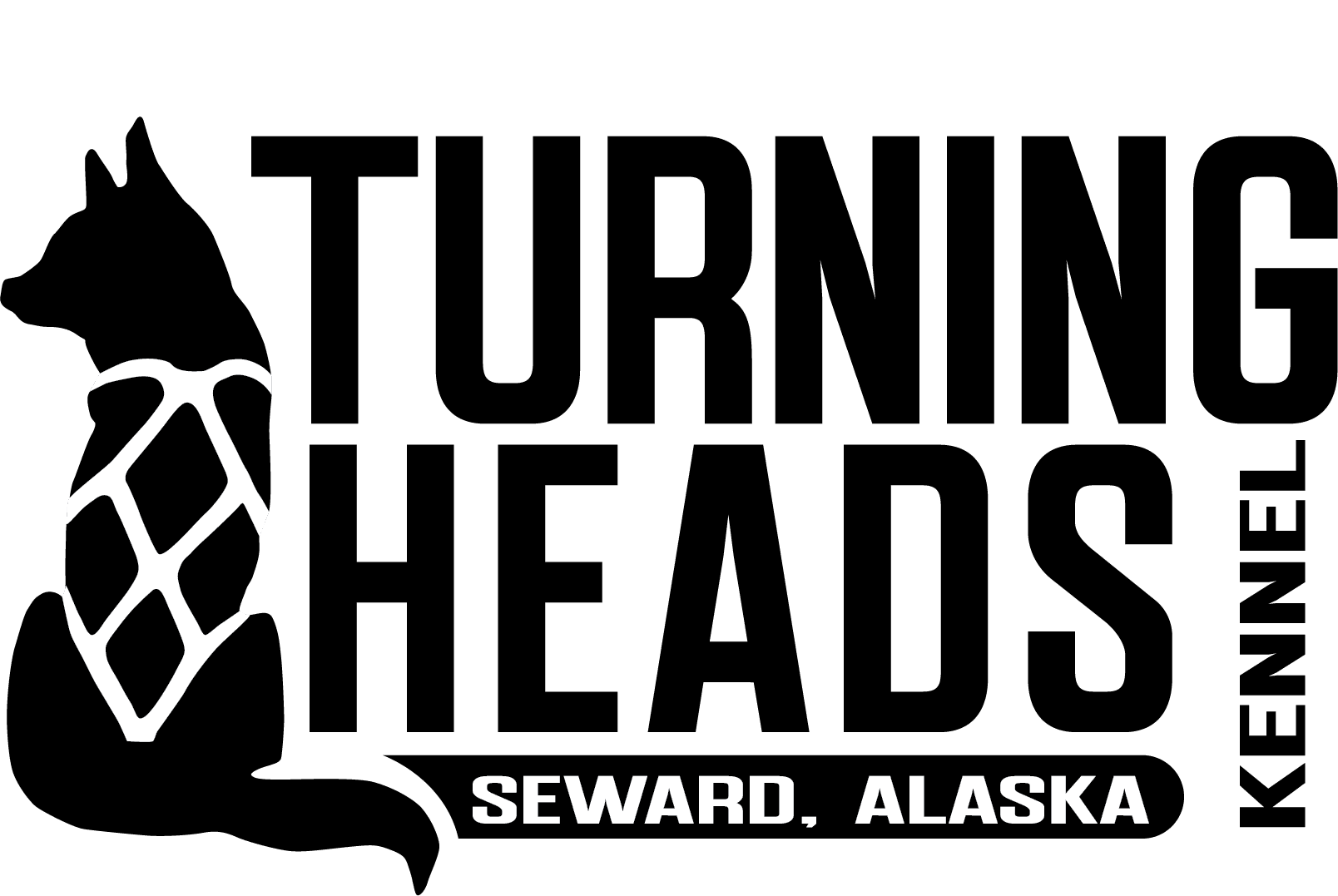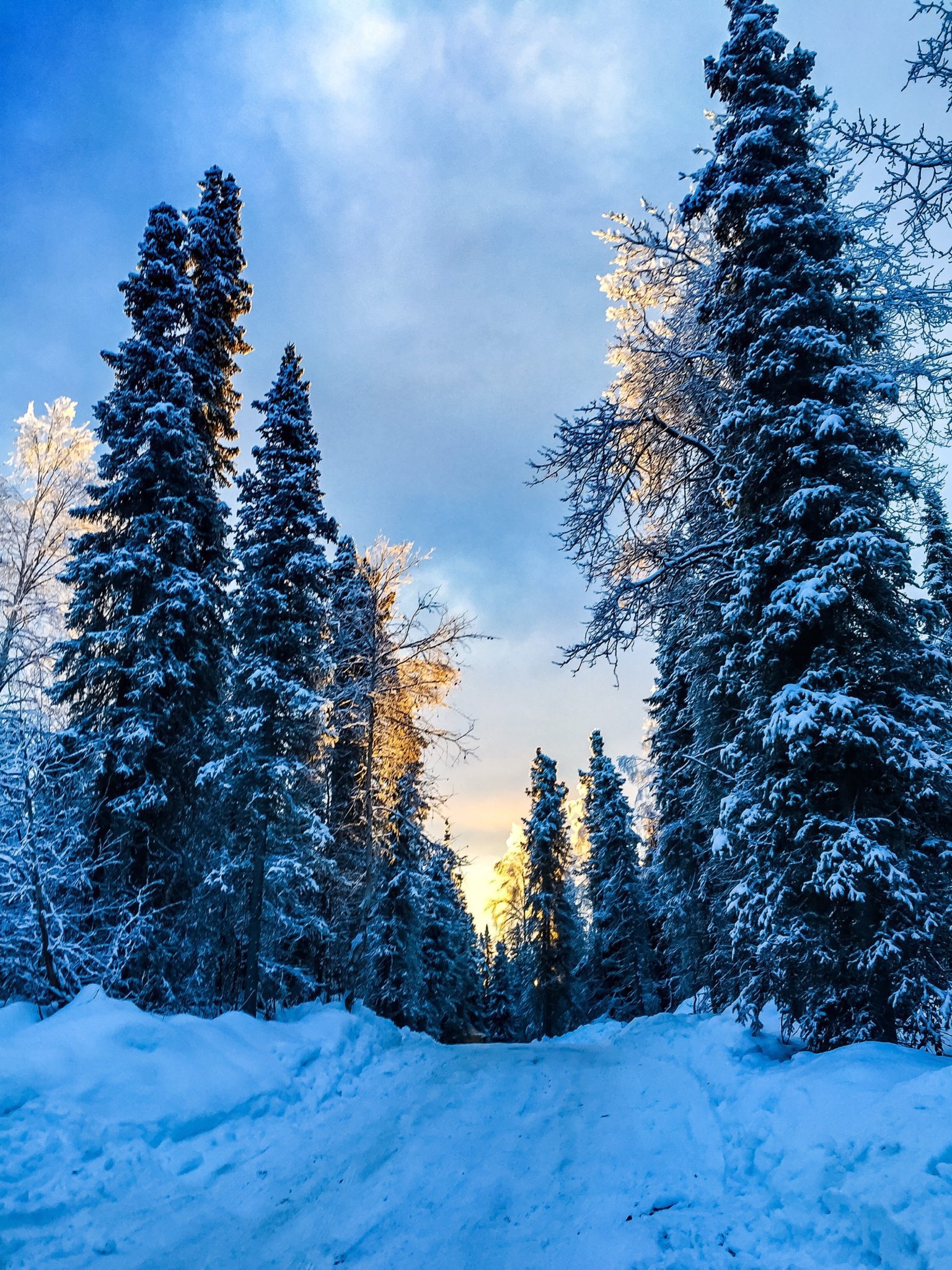Somedays, we start slow. Breakfast occurs at noon and chores go by, one, then another, not quickly but quick enough. We enjoy ourselves, stopping for coffee or cards when we so choose. We change gears slowly.
Days like this are usually warm. Warm for us is anything above 10 degrees because the heat can start affecting how our dogs perform. That’s why we go slow; day light, on these days, is something to avoid.
We hook up close to dark with our head lamps on, preparing for a short camping trip with the dogs as we try a new trail to us that goes to our friends, Wade & Sophie’s cabin.
We head out on the trail, the last of the light sinking around us. Hues of gold and orange and pink linger on the horizon above the swamps as we mush across. The light is so soft this time of year and the color takes a long time to fade, first into sea greens then into egg robin blues and then, gently, into that deep black of night. The stars shine fiercely through it all. It is wonderously beautiful.
Mostly, however, we stare at dog butts. The more I run my team the more I want to look at them. I watch their gait and how they change throughout the run, noting each the subtleties of each dog’s movements. Penny is just a hair smoother on the left. Varden doesn’t settle into a trot when she is in wheel. Benson’s tug goes slack a few minutes before he has to poop. Thunder likes to pace in wheel but he prefers to lope when he’s in other positions. And then other things like at what speed dogs transition into different gaits.
I also watch the smoothness of each dogs movements. Some dogs have fluid movements and others are, well, not as graceful. We learn to define each dog’s normal by their gait and so spend a good deal of time learning the subtleties of their movements. You could balance a glass of water on the back of the smooth dog.
I listen to the radio while I mush, ocassionally having to change the station due to static. Christmas carols are in abundance so I listen to those. We don’t have room for a Christmas tree in our cabin or a way to play music so it’s s refreshing way to get in the holiday spirit.
We stop occasionally, checking in with one another, to make sure everyone is warm and the dogs sound. Mostly, we just mush.
As we come around the corner in a swamp, I see the green glow of eyes as a dog team approach. In a split second, I notice that the sled had no driver. Before I can react Travis is already off his sled and at the front of his team to catch the team.
“They looked so relieved,” he said later. “I mean, they must have been going full tilt and they were grateful to stop.” You see, without a musher on the back of the sled the dogs can work themselves into a frenzy. They did a human on back to tame their wild energy and keep them in control.
I set my hooks and run up to help Travis. He is leading the team off of the trail. We tie the sled to the tree and tip it over for good measure. Then, I give the dogs our straw hoping that it will get them to camp. We lookethe dogs over and look through the sled to see if there was anything we could feed to the team.
“Nothing in here,” Travis said shaking his head. “No weight at all.” Not one to miss a teachable moment, Travis reminded us why weight is so helpful to have. We usually carry bags of kibble or blocks of meat so that should a problem arise we have extra food for the dogs. Weight can solve a lot of problems with a strong team at the start of the run. Food allows you to take care of your dogs if other problems arise — like getting lost or taking longer than expected. We always carry snacks, but carrying food as weight gives us a reserve. Our teams were too rowdy to get rid of our weigt and we were already 20 miles in to what was going to be a 60 mile trip. We didn’t have food to spare. I felt bad.
So we got the team squared away and then had a debate: do we stay with the team or go off looking for the musher? We didn’t consider splitting up because we didn’t know the trails and were not interested in getting lost. We figured the dogs were camped and that if someone lost their team they could be hurt, so we decided to continue down the trail.
Minutes passed and we saw no one. It was an eery feeling waiting to see a musher without a team walking the trail in the dark. I hoped they were ok. In my head I went over medical training I’d had in the past. What if they were unconscious?
With each twist and turn of the trail my stomach tightened. Where was the musher? Had we somehow missed them, hurt in the snow? There were many trails going off the one we were on and we didn’t know, exactly, know where we were going, trusting the dogs and our vague recollection from last year more than anything else to lead us to our destination. We had assumed we would run into the musher.
We quickly realized that there were several other trails the team could have come from and wondered if we had made the right decision. We’d never run into this situation before and weren’t sure what our priority should have been.
Eventually, we made it to our friends and Sophie made a few phone calls trying to alert folks to the team we had found. Still, it never sat well with us
We camped our teams and visited with our friends for a few hours while our dogs rested. Then, we headed back out. We anxiously got to where we had left the runaway team and were relieved to see that they had been recovered.
The night was more enjoyable after that, knowing that musher and team had been reunited. We were all able to relax more and sink back into the rhythm of quiet breathing and the pitter par of sled dog feet as we slid down the trail through the glorious night.


